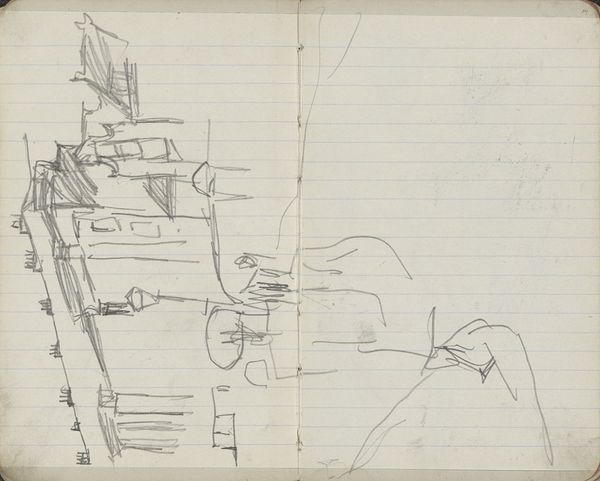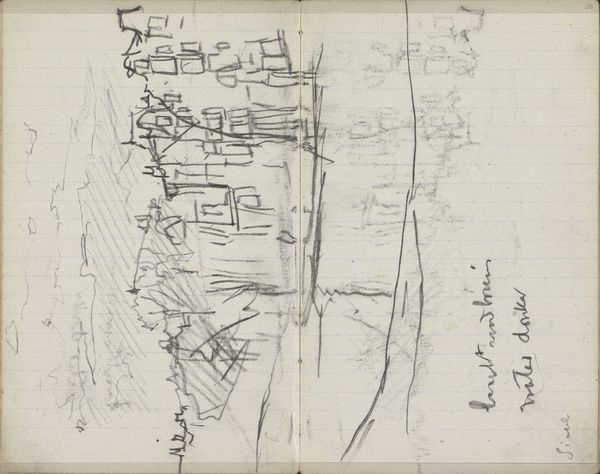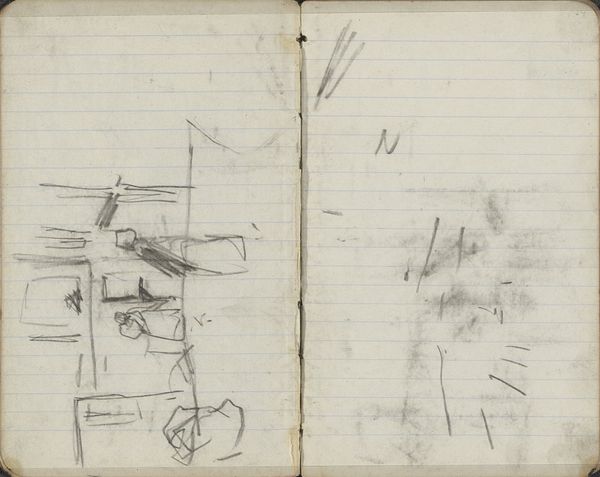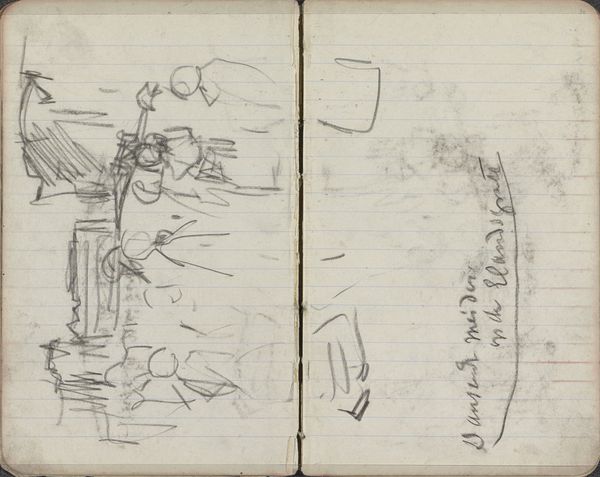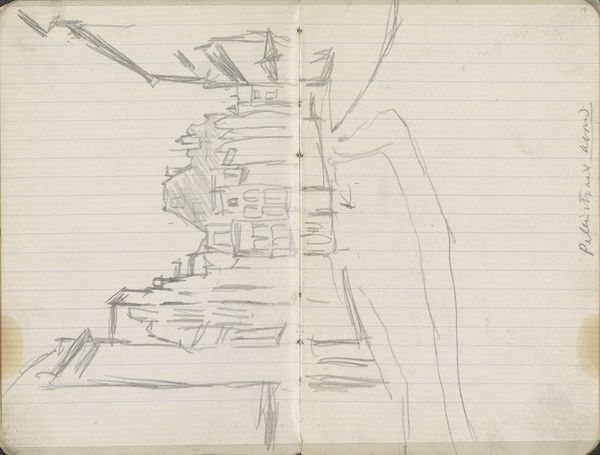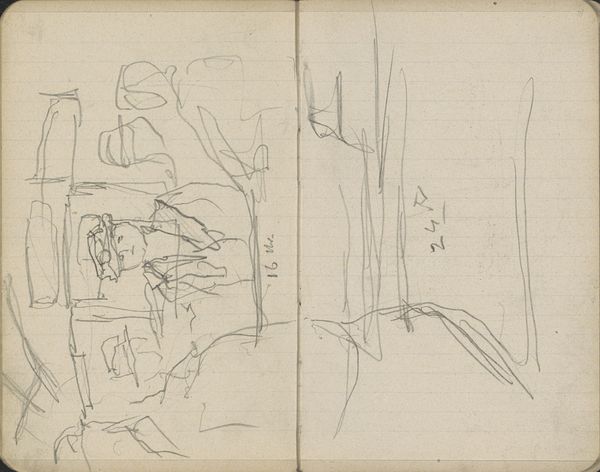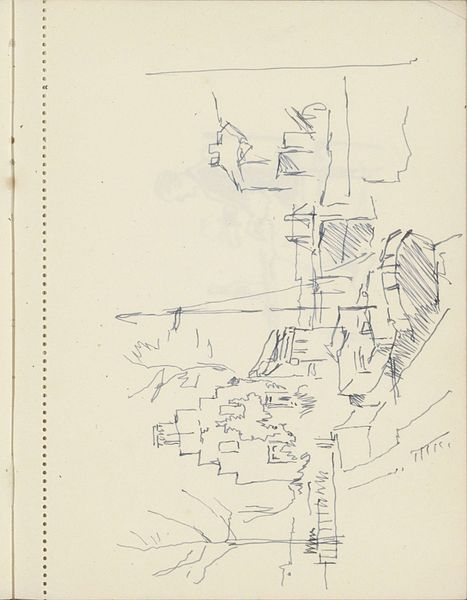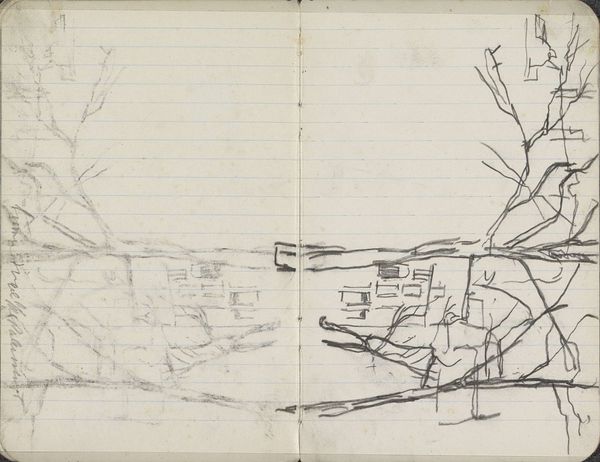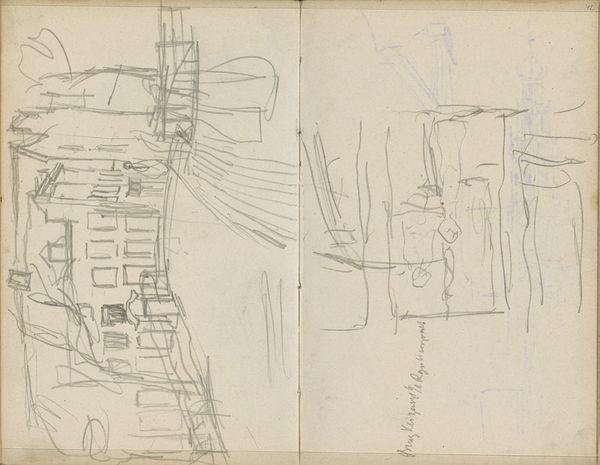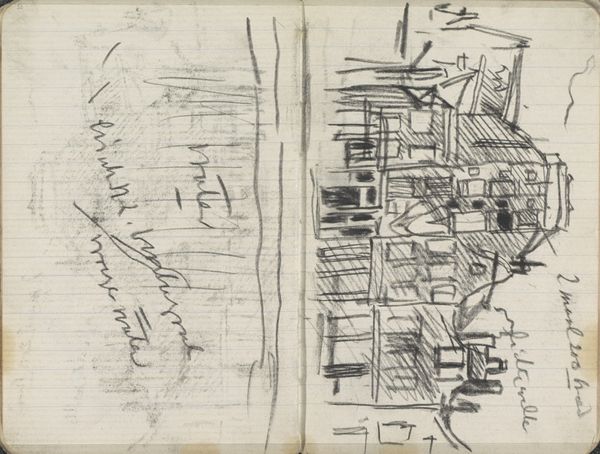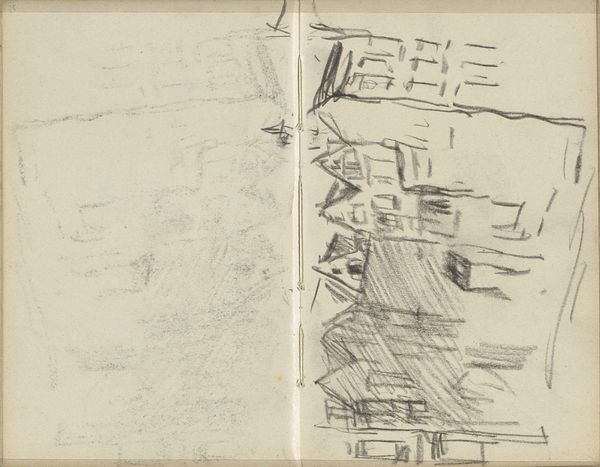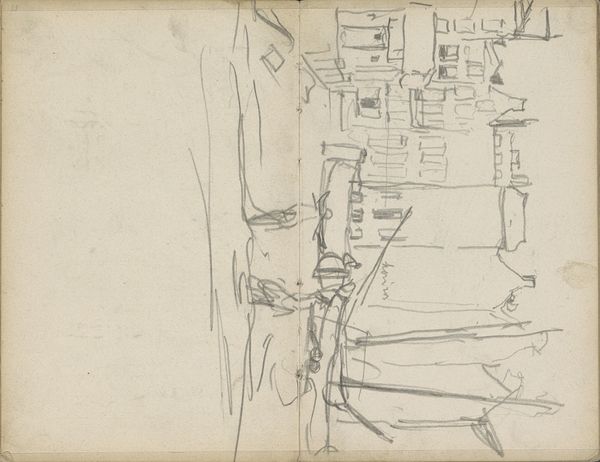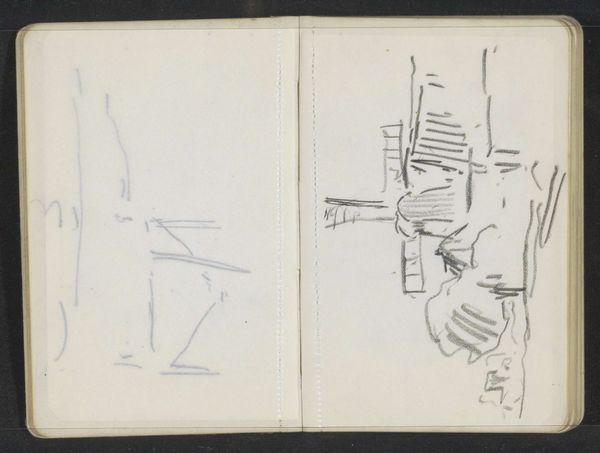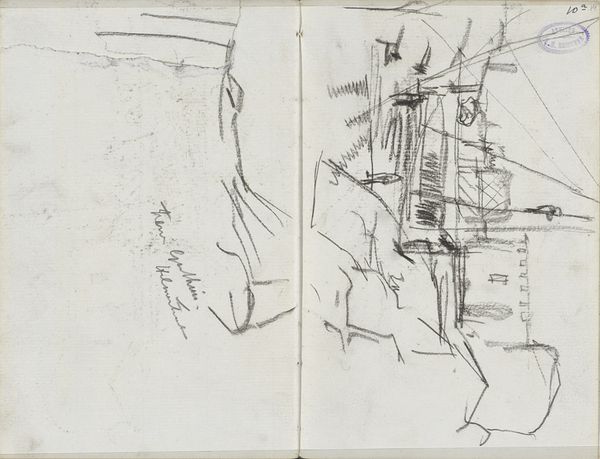
Copyright: Rijks Museum: Open Domain
Curator: This sketchbook page, entitled "Gezicht op de Lauriergracht te Amsterdam" was created by George Hendrik Breitner sometime between 1896 and 1901. It's rendered in pen and ink on paper. What's your initial read? Editor: It feels almost like a secret glimpse into Breitner's mind. The starkness of the lines, the suggestive cityscape juxtaposed with what looks like a quick sketch of a face... there’s a palpable sense of immediacy. It feels intimate. Curator: Absolutely. Breitner was deeply engaged with representing modern life in Amsterdam, and this sketch, though quickly rendered, is still a crucial document of urban change. Consider the Lauriergracht—a space where different social classes, ethnic groups, and genders inevitably mixed, a site of potential collisions. How does this work function as social commentary? Editor: Well, on the left page, we have this sparse depiction of buildings along the canal, but then, intriguingly, on the right, that enigmatic face appears almost like a subconscious response. Are those hastily scribbled notes observations? Emotions? To me, this speaks to a deeper symbolism of identity within urban space. Who is allowed to be seen and remembered, and what parts of the city are memorialized through art? Curator: Precisely. And consider the materials—pen and ink. These suggest the disposability and rapid changes within that era of societal and political upheaval in the Netherlands. Was this just a snapshot that Breitner did in his personal sketch book, or a way of claiming the place of the artist in this new society? It has implications of that artist as documentarian, interpreter, and even social critic. Editor: And there's an echo of historical symbolism there, too. Think of how water, particularly canals, have long represented both division and connection in art. It speaks to something more profound about urban living, beyond the mere visual representation. Curator: This sketch then, provides a crucial entry point to thinking about Breitner’s position in his milieu and, also the symbolic charge he imbues this work with as both a deeply personal act and a mode of cultural inscription. Editor: It certainly invites a rich interpretation that goes far beyond its modest scale and informal style. Thank you. Curator: It's been a pleasure to re-examine this piece with you!
Comments
No comments
Be the first to comment and join the conversation on the ultimate creative platform.
